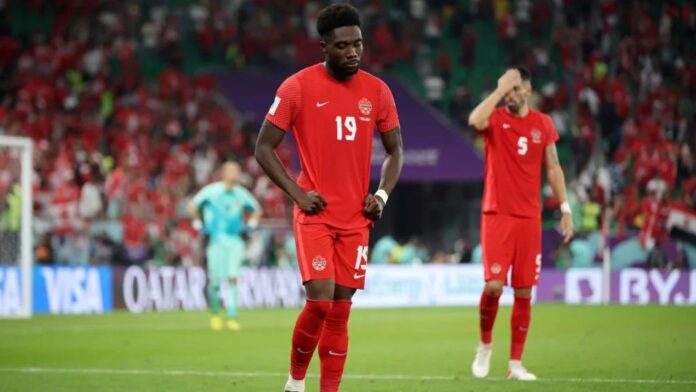In November, the Canada Men’s National Soccer Team returned to the FIFA World Cup for the first time since 1986. The level of hype surrounding it rivaled other legendary 21st century moments in Canadian sports history such as the gold medal game for men’s hockey in the 2010 Winter Olympics, and the 2019 Toronto Raptors championship run.
Canada’s first match was against a veteran Belgium squad that came into the tournament ranked number two in the world. Canada came out of the gates flying with multiple early chances, including an early penalty kick from star player, Alphonso Davies. However, he was stonewalled by Thibaut Courtois, putting a pause on Canadian’s hopes of getting their first-ever goal in a World Cup match. Canada continued the relentless pressure throughout the first half, completely controlling the play against a Belgian squad that looked sluggish. But Courtois kept them in the match until they found their opportunity to strike. As the first half was coming to a close, Michy Batshuayi blasted a shot past Milan Borjan in the 44th minute to break the tie. Canada kept their composure and kept battling in the second half, but became visibly more desperate and frustrated as the game came to a close with a final score of 1-0 for Belgium.
Despite the loss, Canadian fans and players felt confident heading into their second match against Croatia, who was the runner-up at the most recent World Cup in 2018. That energy translated right away as Alphonso Davies scored on a flying header less than two minutes into the match, instantly etching his name in the record books and seeming to redeem himself from his missed penalty in the previous fixture. This nationwide elation only lasted about half an hour as Croatia turned the tide of play against the Canadian squad.
The Croatian midfielders’ and wingers’ pace outclassed Canada’s defense, led by Alistair Johnston and 39-year-old veteran captain, Atiba Hutchinson, leading to 2 quick goals to end the first half. From there, Canada didn’t have the skill nor the poise to bounce back, recording their second loss with a score of 4-1.
Their final group stage match against Morocco didn’t have the same level of excitement surrounding it, as Canada was already mathematically unable to advance to the round of 16. Nayef Aguerd notched Canada’s second and final goal of the tournament, which ended up being the only goal Morocco would concede until they reached the semifinals. Canada dropped the game 2-1, leaving the achievement of earning their first point in a World Cup to be earned the next time around.
Even with all the hype and history-making, it felt like an unceremonious exit for a team that flashed a lot of promise. It’s difficult to not imagine what could have been different had a couple of events gone differently in the early matches, with quite a few missed chances that could likely be chalked up to World Cup jitters. All that Canadian supporters can do now is look forward to 2026 when Canada has the honour of hosting the World Cup alongside Mexico and the United States. The three nations will share hosting duties with matches being played in 16 cities, with Toronto and Vancouver being the venues for games in Canada. The three hosts will all automatically qualify for the tournament as they look to dethrone the defending champions from the 2022 tournament, Argentina.
On the women’s side of Canadian soccer, a new domestic league, the Women’s Premier Soccer League, was announced in early December. This comes with a level of promise while carrying some questions. It’s long overdue to have more options for female players in Canada to develop their game locally without having to look overseas. However, it’s yet to be seen if the league can carve out enough influence to be successful. The league is division 2, which is semi-pro soccer. This means top players will still be drawn away to clubs with higher prestige, so its market will primarily be young promising players who need an intermediate step of play. The WPSL announced they plan to expand and become a professional league in five years, so they hope the league can remain afloat and succeed until that time.


